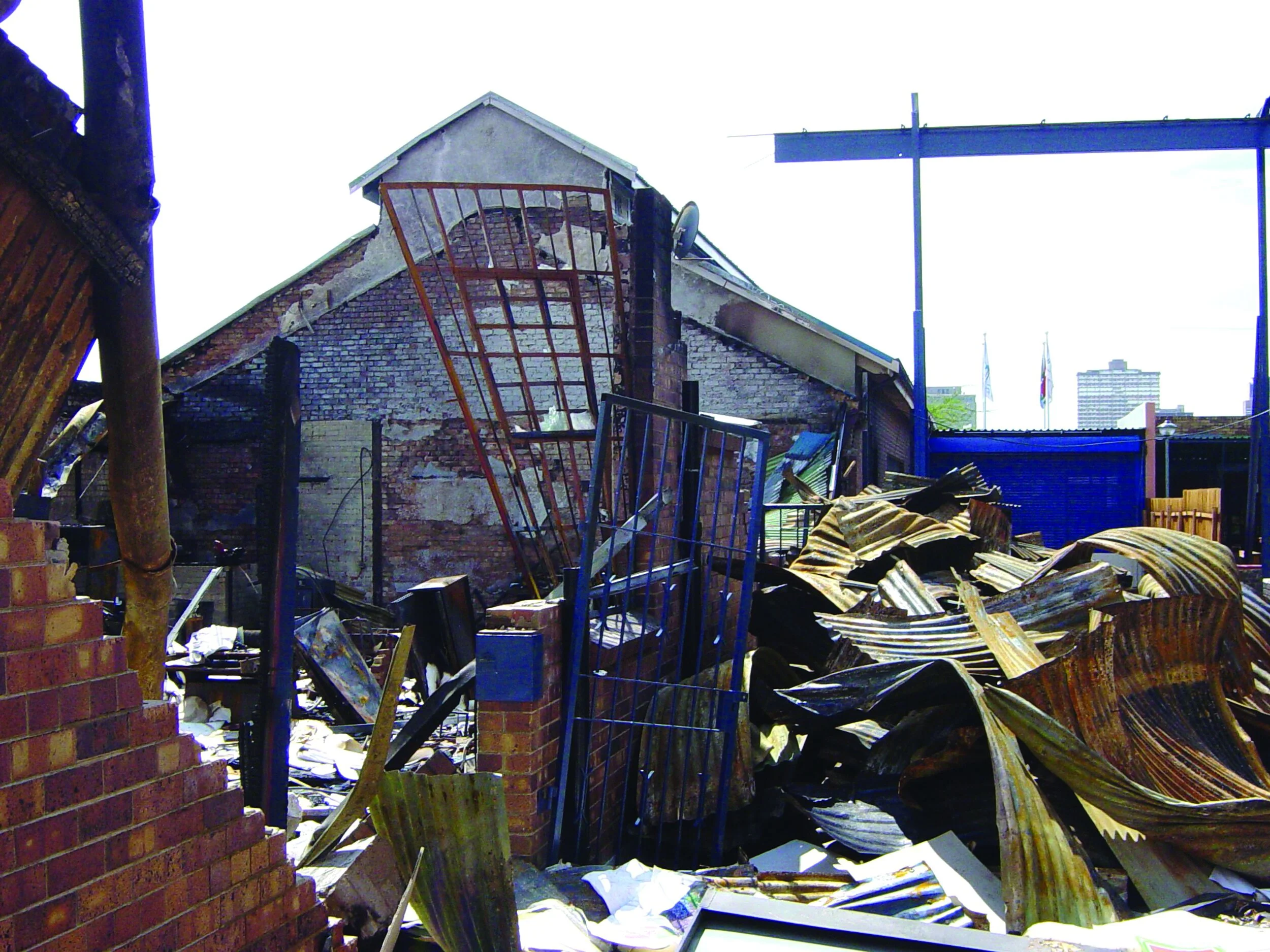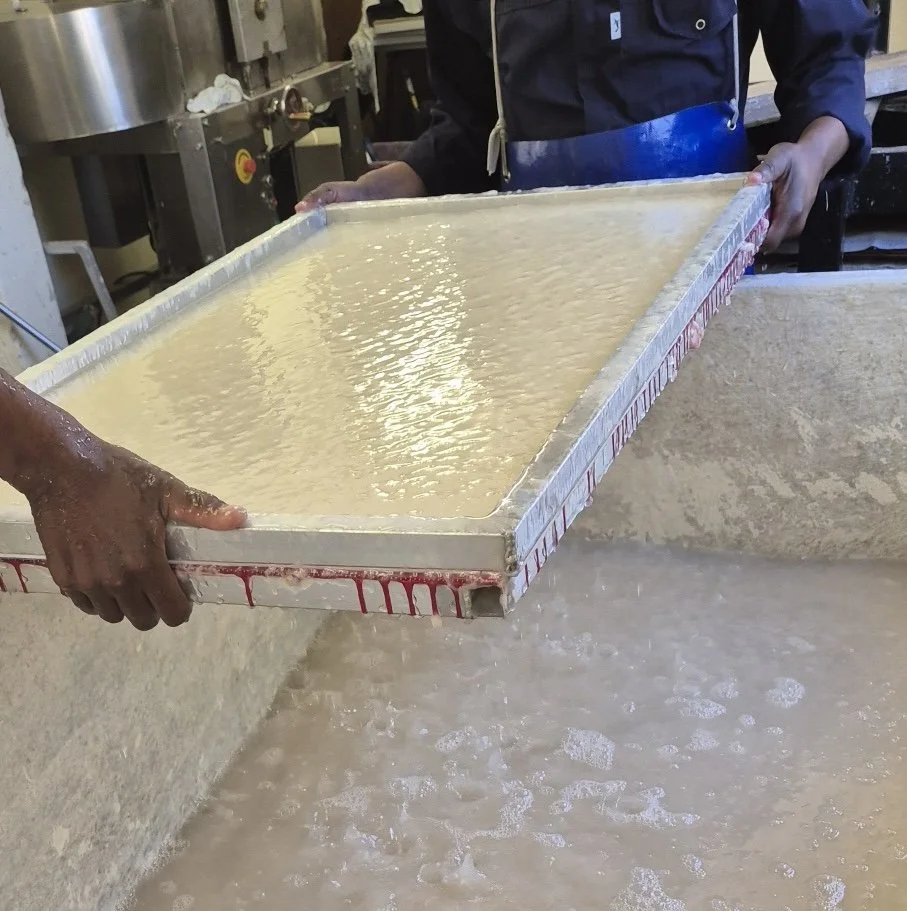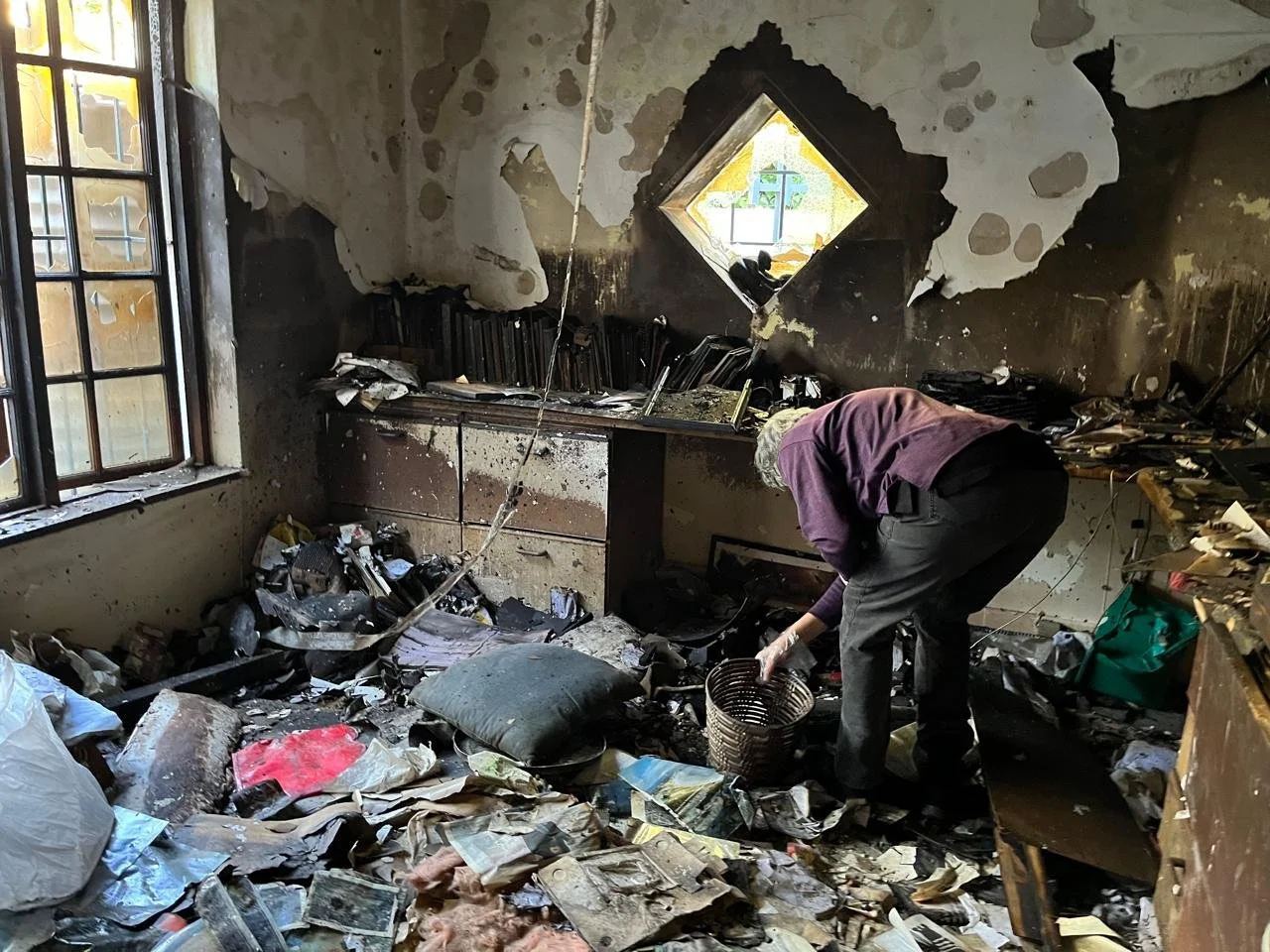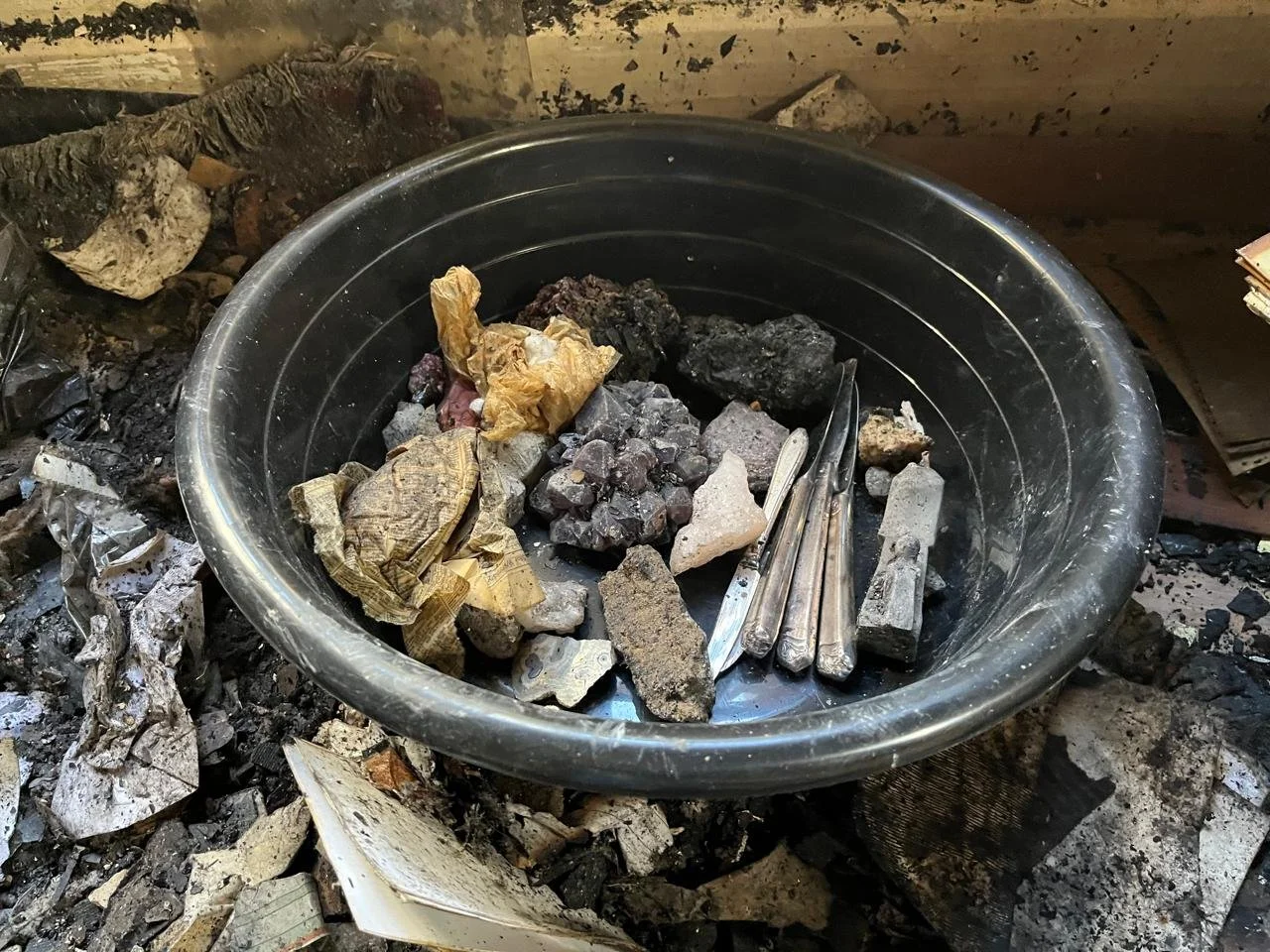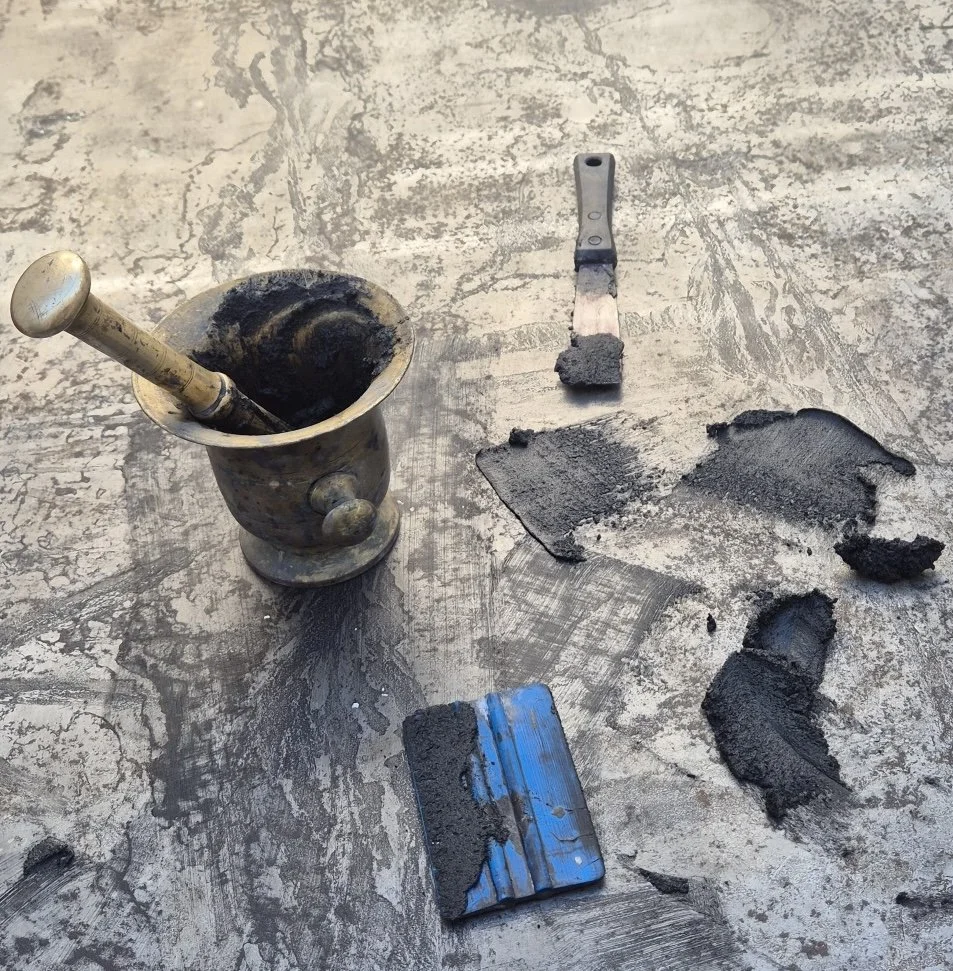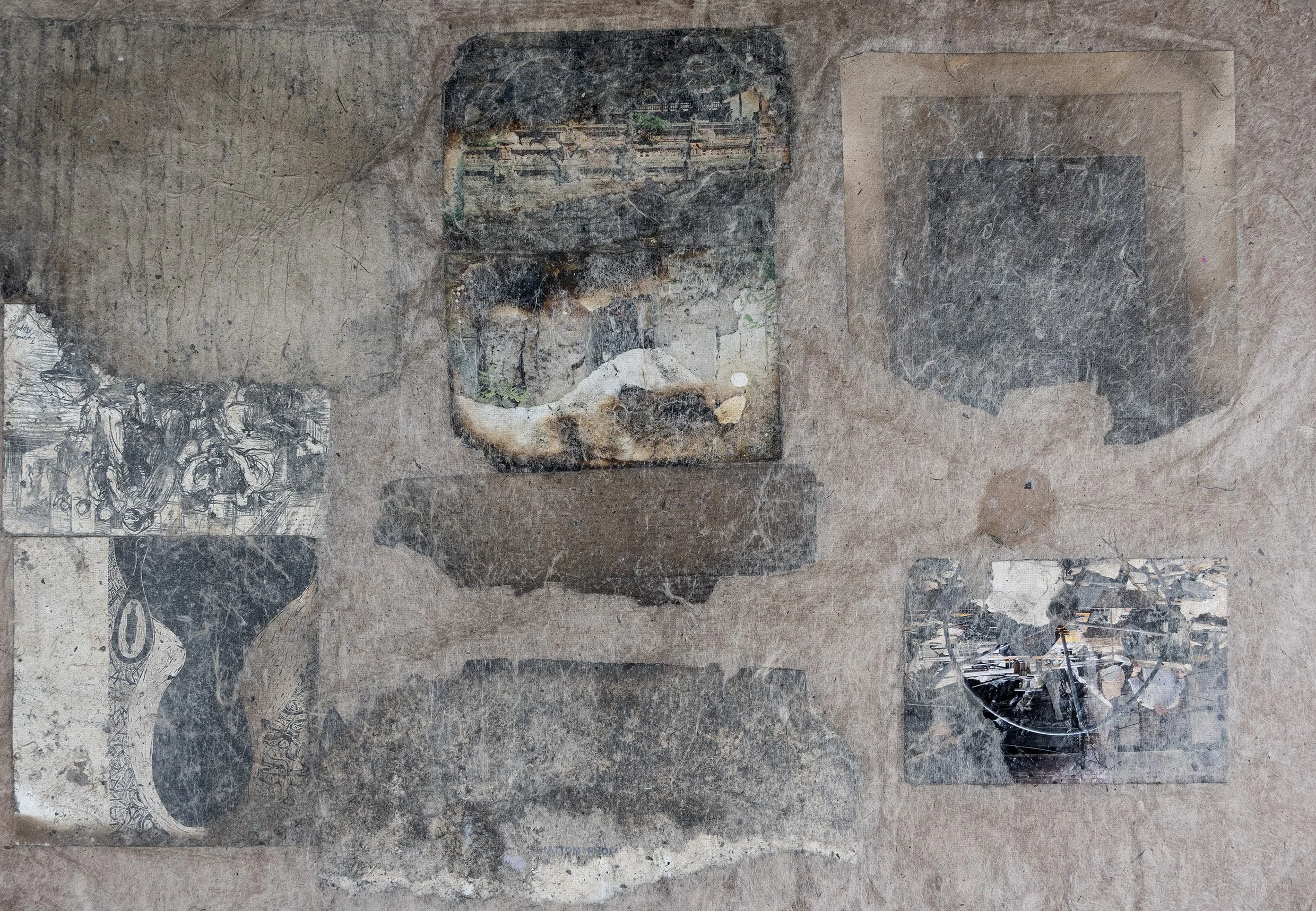Fire Revisited Inferno
Hayley Berman
Weeks before Kim’s retrospective exhibition, a home fire - a frightening, traumatic incident - destroyed her home office. The reverberations of familiarity, textures of experience, and aesthetic resonance were almost mystical in their repetition. What is it about Kim’s deeply personal encounters with fire?
In 2003, Artist Proof Studio burned down, resulting in the death of Nhlanhla Xaba and the destruction of hundreds of artists’ work. Meaning was made of the trauma by excavating fragments of the remains, working therapeutically to grieve the multiple losses and recreate the fragments into artworks to anticipate new futures. In 2012, an exhibition at Johannesburg Art Gallery commemorated Nhlanhla’s work and life with a curated section of the exhibition ‘after the fire’, utilising the fragments of the tragedy.
(Left) After the fire at APS; (Right) Installation at JAG exhibition: APS @21
Kim’s work has embodied representations of fires for many years - fires blazing, smoking, the aftermath of ashes and remains, all metaphors for the South African psychosocial and political context.
The devastating home fire on 8th June 2025 destroyed, yet ironically revealed, an artistic treasure trove. Journals, archives, artist’s books, and a geological rock collection were excavated by sifting through the remains to find parts of the self that could be repurposed, reimagined, and recreated. This process approximates the act of ‘ground truthing’, usually amassed remotely from satellites or aerial surveys, to observe, collect, and sense data on the ground to ensure the accuracy and reliability of real-world conditions. Kim’s process, however, was a physical engagement in close proximity with the live material, touching and digging through ashes and remains. It became a psychological and analytical pursuit of the excavation of buried, repressed, hidden fragments of memory carefully stored in the unconscious crevices of cupboards and drawers. The feeling states resurface. The nostalgia of past relationships, resurfaced grief for loved ones that have died, pride in projects manifested, all are revealed in traces of evidence - burnt.
(Left) Searching for remains; (Right) Discovered treasures.
Paper remains were resurrected, some barely discernible, some vivid and intact. Afterwards, Kim embedded them in fine Kozo fibre from Ghana mixed with the fire’s crushed charcoal remains that she pounded down to a fine powder with our grandmother’s brass pestle and mortar (one of the hidden treasures). These layers of meaning and memory were then further held on a secure foundational base of paper made from the pulp of hemp and sisal fibre.
(Left) Making the base sheet; (Centre) Ghana-kozo fibre; (Right)Grinding ash pigment.
The secure base (Bowlby, 1962) of the rest of the home survived. Perhaps here, the tightly bound fibres of the hemp and sisal sheets that the Kozo could rest upon echo this, a place of refuge and solidity. Perhaps the rituals of making meaning of this devastation have been a protective mechanism, a helpful defence. Creating and making meaning generates the semblance or illusion of control in the face of trauma and loss. This protective mechanism offers creative potential, a sense of agency, resilience, and resourcefulness, bringing opportunities for symbolic elaboration and healing.
Embedded fire fragments on a base of cotton and hemp paper overlayed with transparent kozo fibre
The fibres of intergenerational trauma, embedded and exposed, uncover unanswered questions of how far back this burning goes, that it should keep reverberating and resurfacing. Perhaps it is part of our Jewish ancestry and heritage of vulnerability, survival, and near-death experiences not yet metabolised. Perhaps there is a need for revisitation until something is understood, digested, and can be safely put down not to return. There is a fascination, a compelling movement towards rather than a retreat away from fire.
Kim has a deep belief in the power of material and process to communicate, transform, and heal. The acts of making, embedding, recreating, and photographing are symbolic and transformational. These acts mirror the mechanisms Freud explores in Mourning and Melancholia (1917) to make meaning of loss, promote symbolic thought, and facilitate the potential to mourn. This body of work draws on the elements so alive in trauma - the sensory, smell, texture, and memory - which leave traces of familial symbology, our South African social unconscious, and deeply personal iconography.
‘Without question, in the depths of the crypt unspeakable words buried alive are held fast, like owls in ceaseless vigil’ (Abraham and Torok,1994, 159-60).
